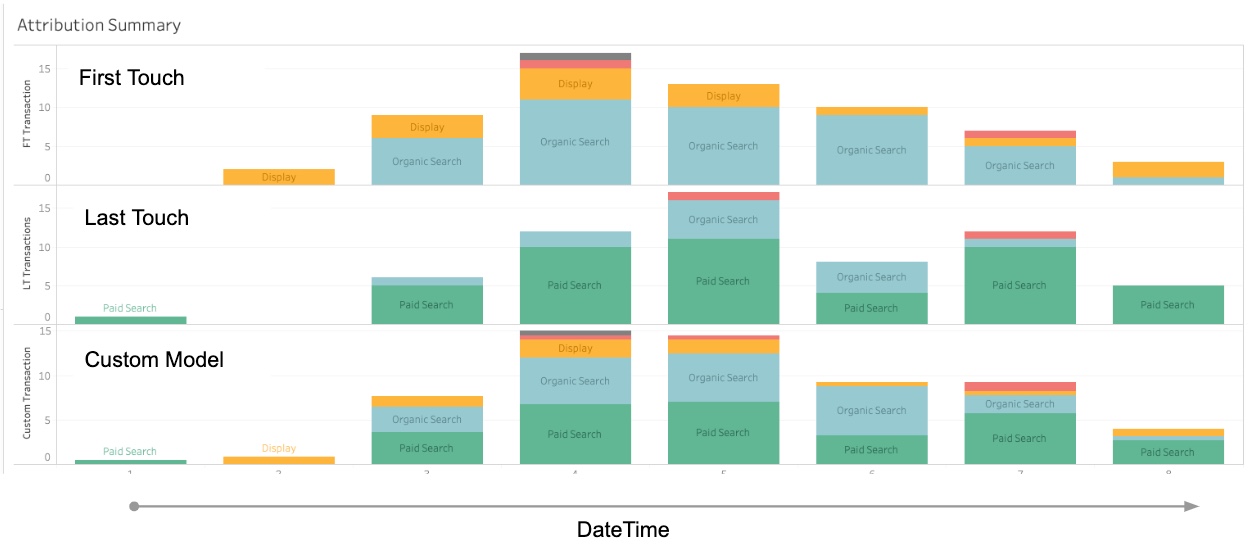

The first interaction (or first touch) attribution model is focused on the first known touchpoint in the customer journey.įREE GUIDE: Understand The Key Elements Of A Successful Ad Tech/MarTech Projectįrom identifying which features will deliver the most value to discovering how to release your Ad Tech/MarTech platform sooner. This model stands in opposition to the two previous models. This model can also lead to false insights and bad decisions.

Just like the last interaction model, the main disadvantage of this model is that it does not take into account the various touchpoints in the customer journey. This model is better than the last click model, but still over-simplifies the multi-channel journey. This means that if a consumer first visited your website from Facebook, then came back via a direct visit and then converted, 100% of the conversion would be attributed to Facebook and 0% credit would be given to the direct visit. In this model, 100% of a conversion is attributed to the last known click or referral that wasn’t a direct visit. The last non-direct attribution model is very similar to the previous model but with one essential difference – it removes direct visits from the equation. The main disadvantage of this model is that it totally ignores the previous touchpoints in the customer journey and as a result can cause marketers to make some very bad business decisions. So if the last action before a conversion was a direct entry, then 100% of the conversion would be attributed to the direct entry. There is nothing sexy about this model – all it does is attribute 100% of a conversion to the last known refferal, click, or traffic source.

The last interaction (aka last touchpoint) or last click model is the oldest model out of them all and is used by default in many web analytics tools along with the last non-direct model. 7 Multi-Touch Attribution Models For Conversion-Driven Marketers 1. Well, luckily for marketers, there are a number of online, multi-touch attribution models that can help them identify which channels are bringing them the most customers, and which ones aren’t. So now the question is – if marketers are using a number of channels, how can they identify which ones are performing the best? an ebook), or even fills in a contact form on a landing page. A goal could be when a consumer purchases a product, downloads a file (e.g. However, things start to get challenging when marketers have to determine which channels are bringing them the best results.Īttribution is the process of assigning credit to one or many interactions (aka touchpoints) a consumer has with a brand over a period of time (known as the customer journey or conversion path) before they convert.Īttribution allows marketers to determine how the different channels impact the final conversion.Ī conversion is any goal set up by a marketer. In order to achieve this, online marketers use a range of channels, some include the following:
#Multitouch attribution free#
Marketers are responsible for getting the company’s name out there (awareness stage), persuading potential customers that their product or service is better than others (consideration stage), and luring potential customers in with free trials and discount offers (decision stage).
#Multitouch attribution Offline#
The end goal of any business – be it an online and/or offline business – is to make money and increase profits over time.Īnd while there are many factors that determine the business’ ability to do this, the most influential part of it is often the work of marketers.


 0 kommentar(er)
0 kommentar(er)
